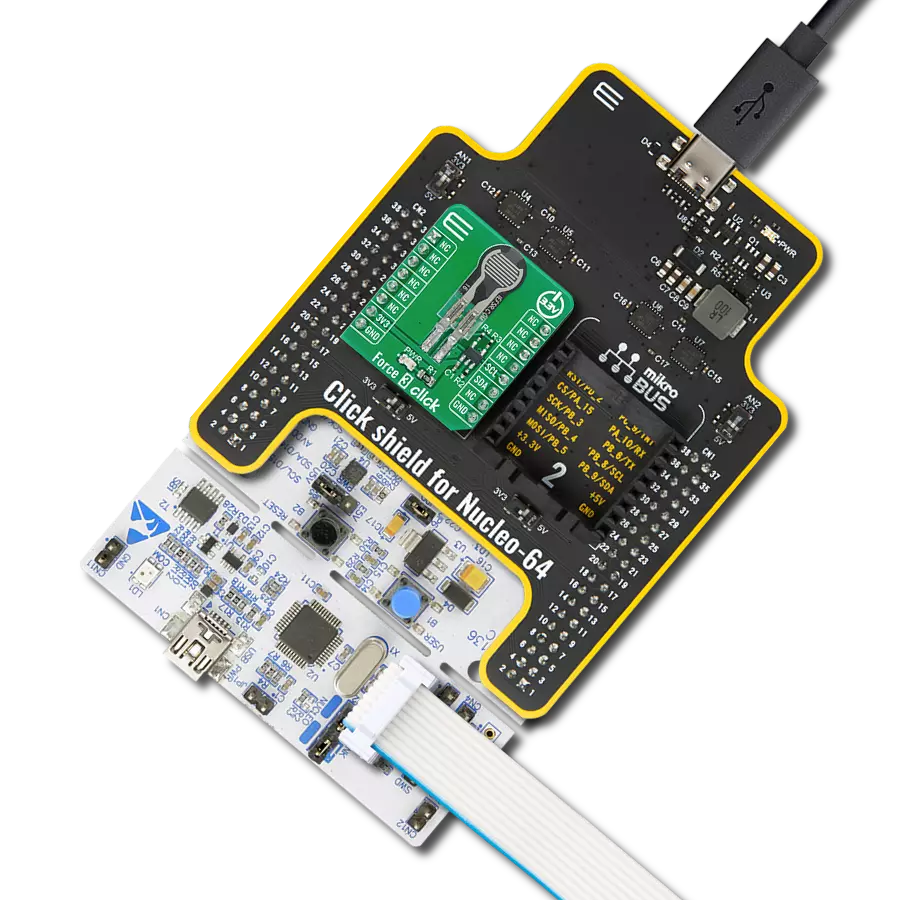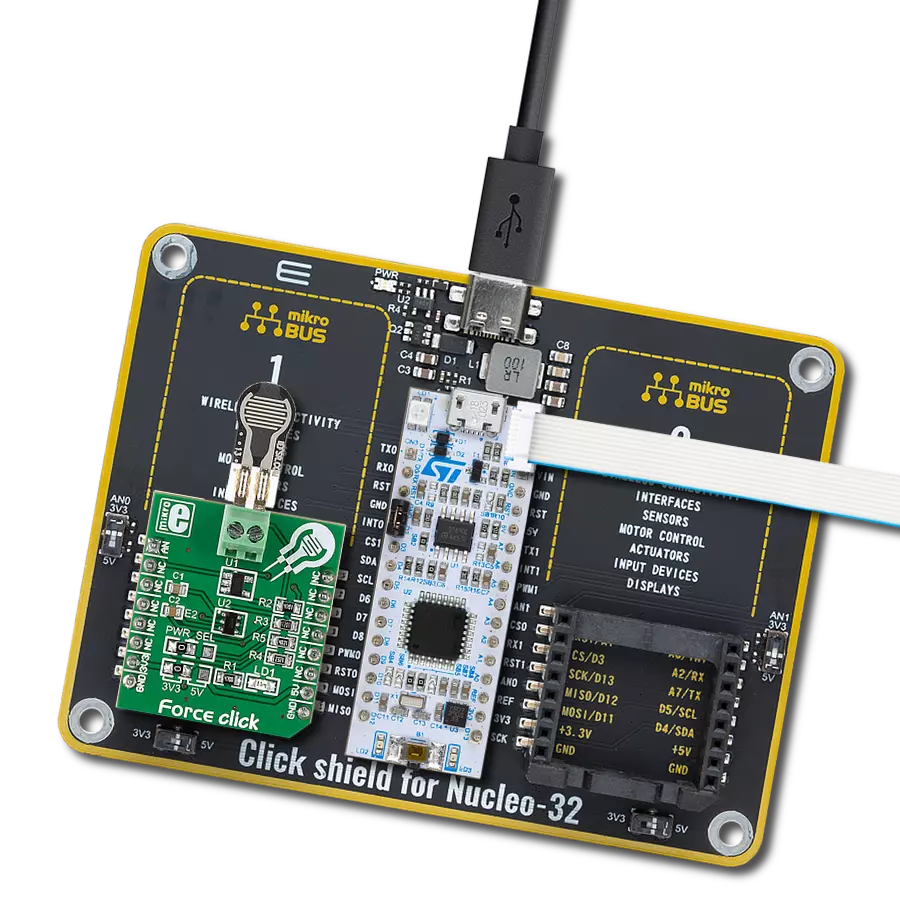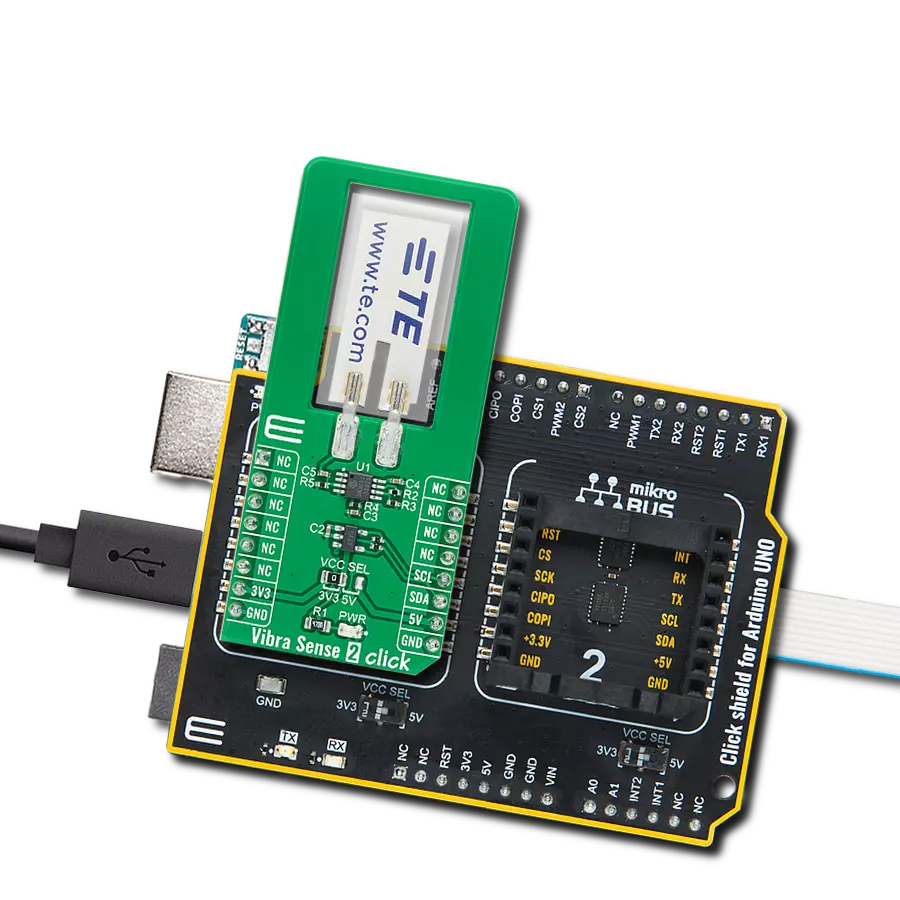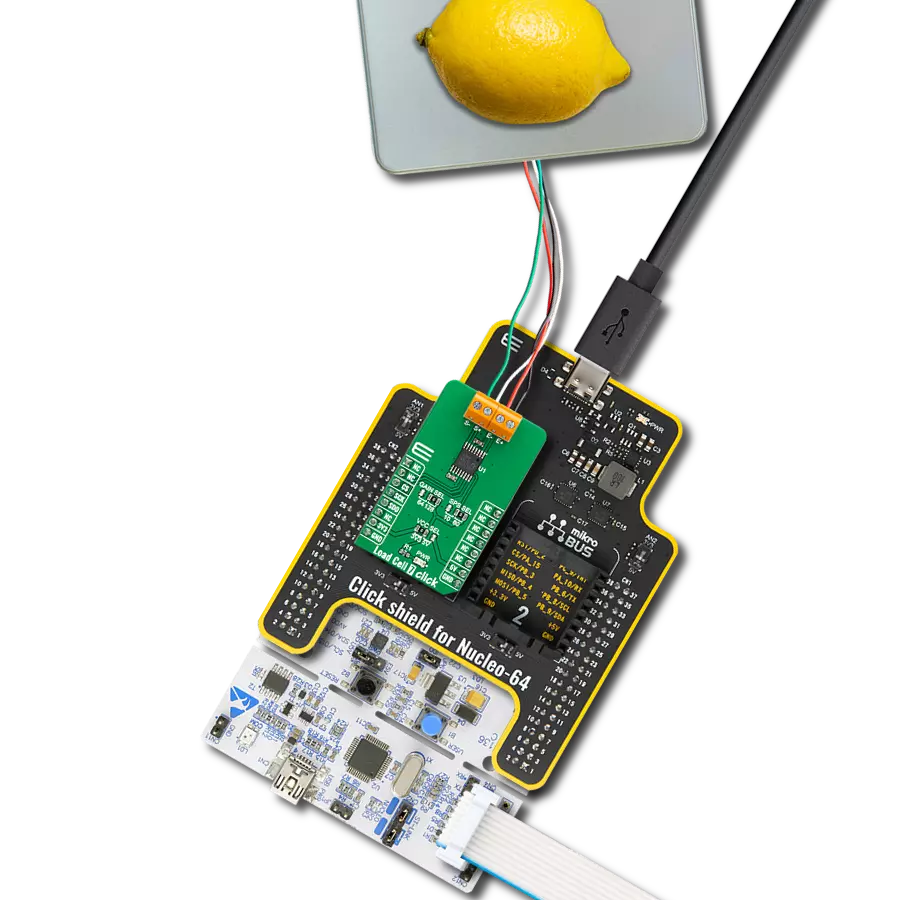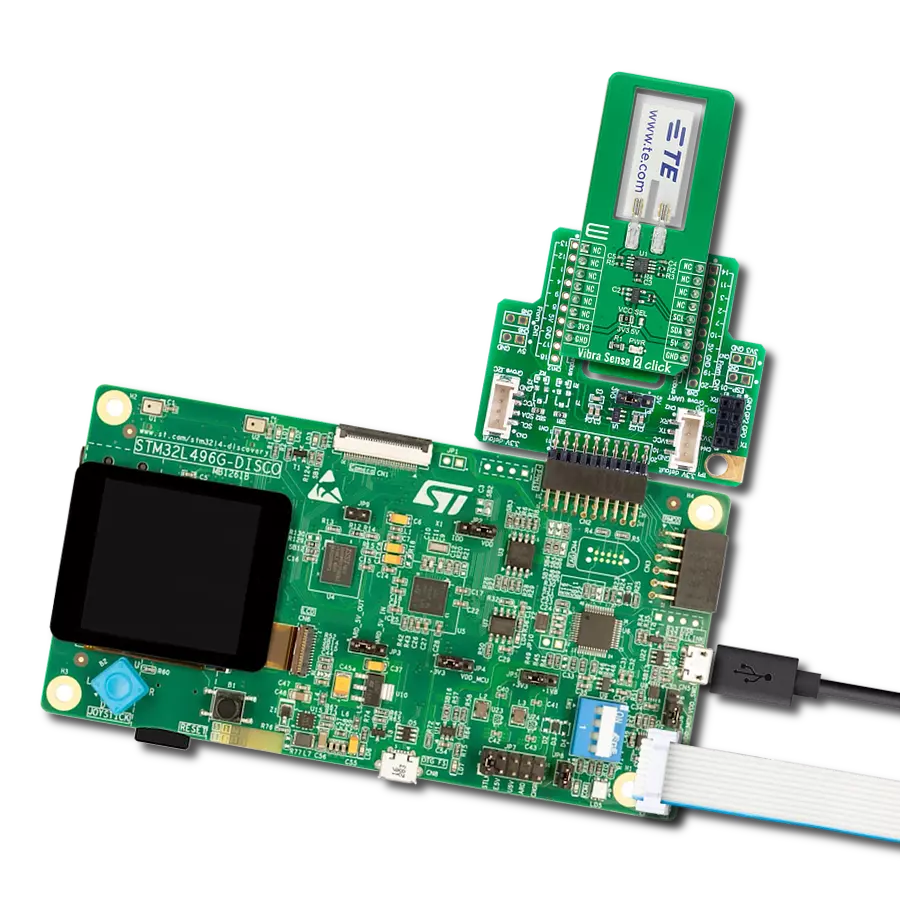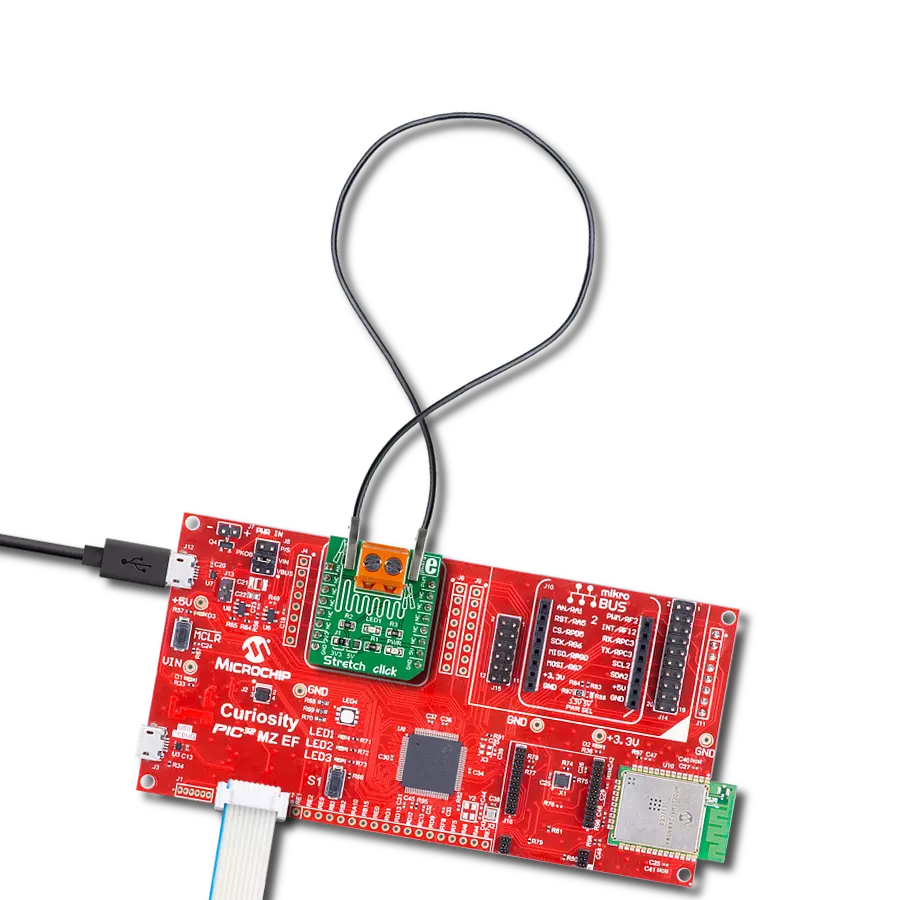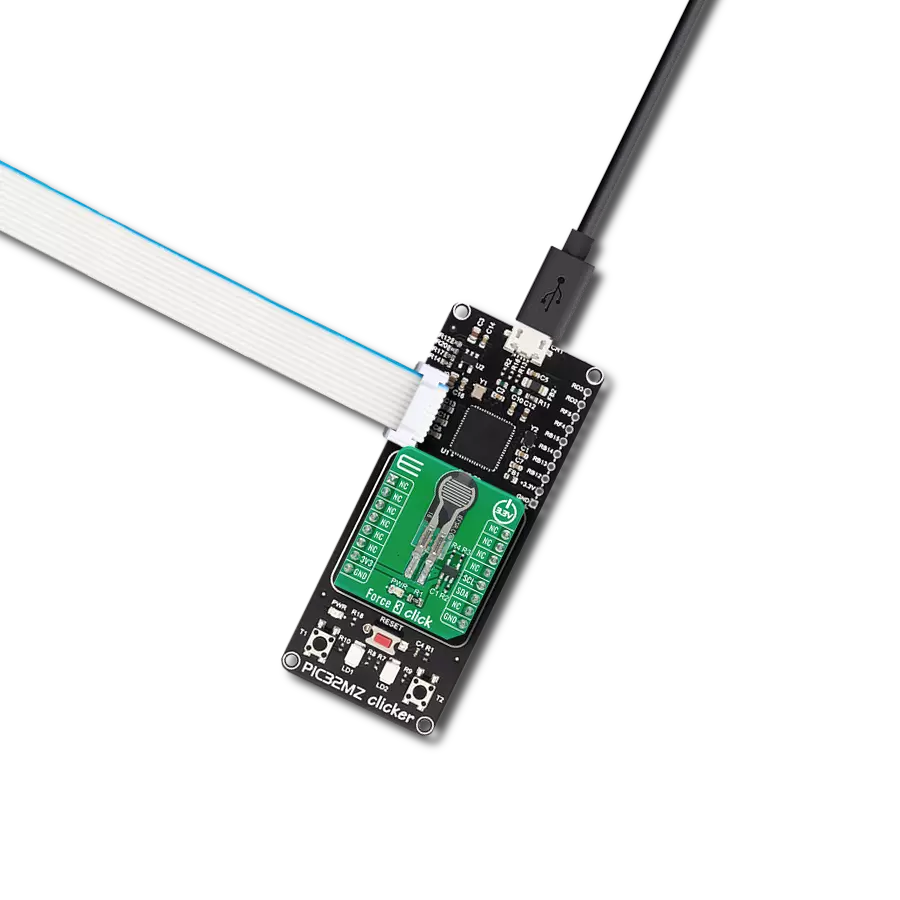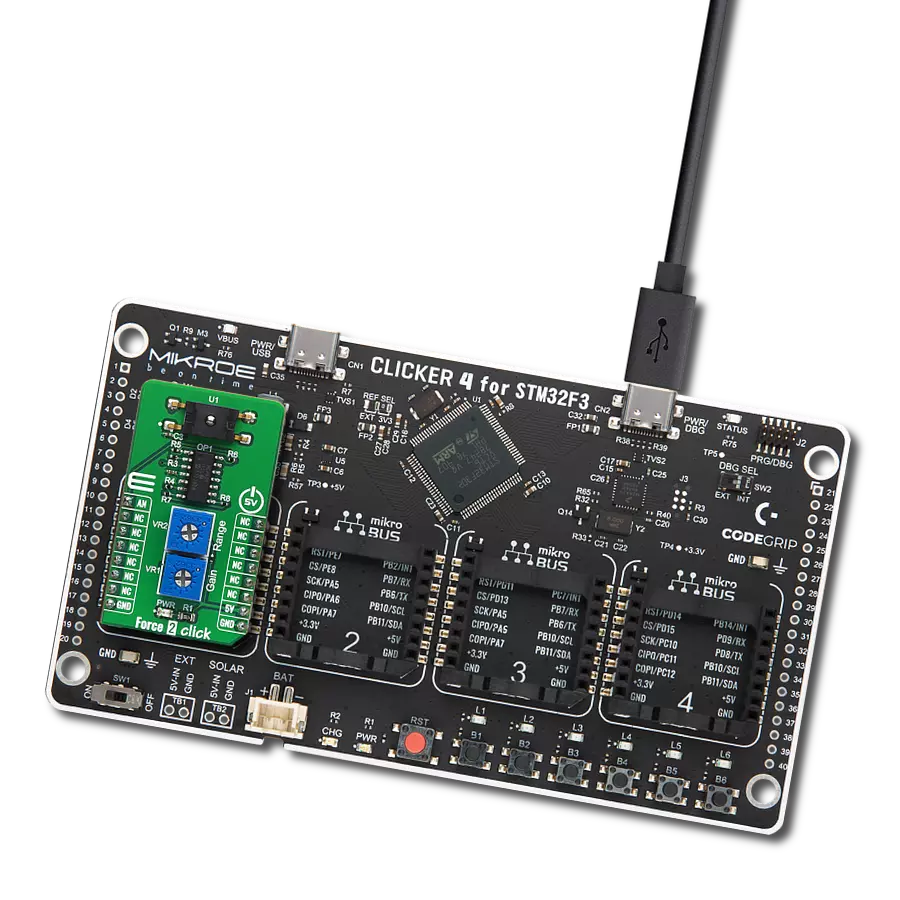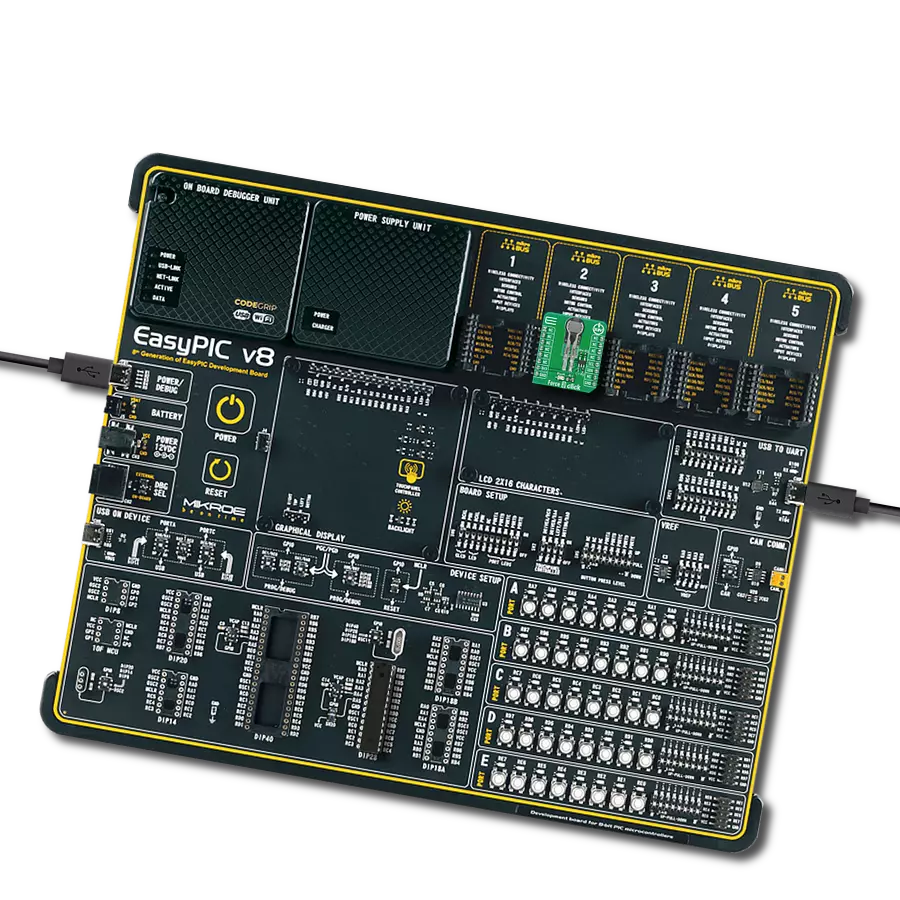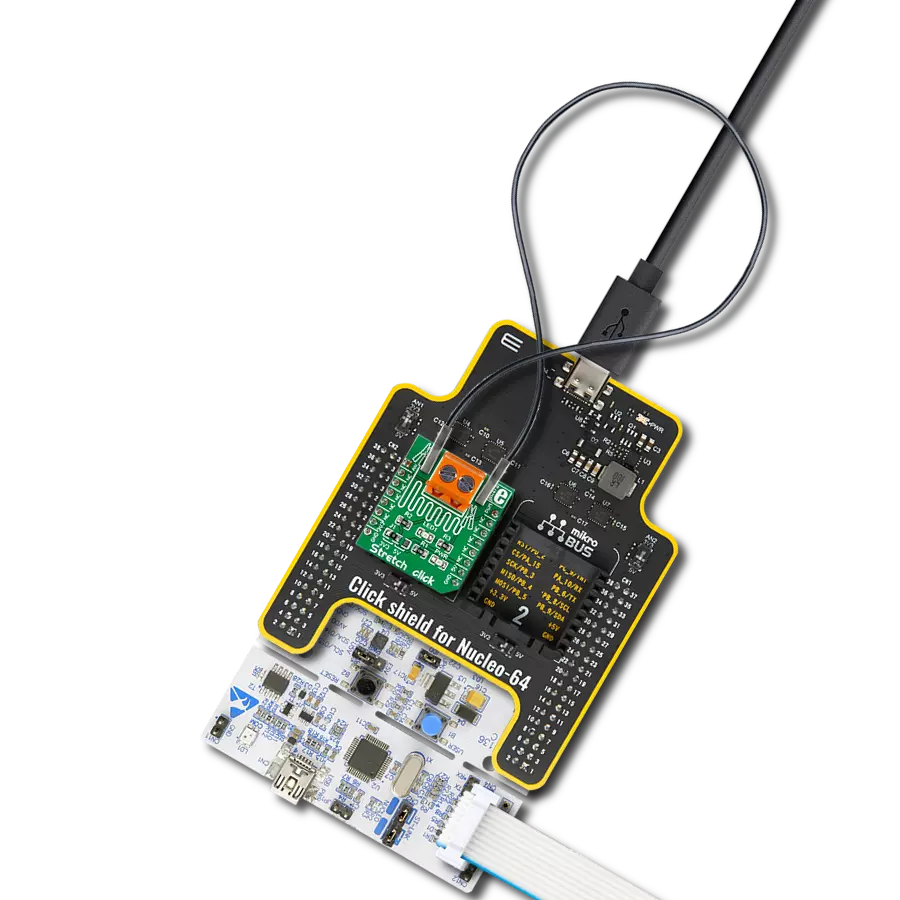Improve inventory management through consistent weight tracking
A
A
Hardware Overview
How does it work?
Load Cell 6 Click is based on the MAX11270, a pin-programmable, ultra-low power 24-bit ΣΔ ADC that resolves a very high dynamic range from Analog Devices. The MAX11270 achieves excellent 130dB SNR while dissipating an ultra-low 10mW. It allows users to select a programmable gain amplifier with gain settings between 1x to 128x, unity-gain buffer, or connect signals directly to the delta-sigma sampling network. This ADC can resolve micro-volt level changes to the analog input, making it a good fit for seismic, instrumentation, and ATE applications. The MAX11270 measures differential analog inputs (S+, S-) in buffered, direct connect, or PGA. The default configuration is directly connected, with PGA and input buffers powered down. These optional buffers isolate the signal inputs from the switched capacitor sampling network, which allows the MAX11270 to be used with high-impedance sources without compromising the available
dynamic range. The ADC input range is programmable for unipolar (0 to VREF) ranges set by the reference voltage value obtained by the MAX6126, a 3V high-precision voltage reference, also routed to the E+ terminal. Load Cell 6 Click communicates with MCU through a standard SPI interface that enables high clock speeds up to 5MHz. The MAX11270 is highly configurable via the internal registers, accessed via the SPI interface. It operates in two modes: Conversion mode or Register-Access mode, selected by the command byte. Those registers include PGA gain selection, offset and gain calibration, and a scalable sample rate to optimize performance. It also offers software-selectable output data rates, up to 12.8 kps with no data latency and 64 kps continuous, to optimize data rate and noise. In addition, the Reset pin, routed to the RST pin of the mikroBUS™ socket, is used for a complete reset of all digital functions, resulting in a Power-On reset default
state, while the Data-Ready signal, labeled as RDY and routed to the INT pin of the mikroBUS™ socket, notifies the host MCU when the data is ready. The Sync Reset signal is also used, labeled as SYN, and routed to the PWM pin of the mikroBUS™ socket, which resets both the digital filter and modulator. It also has a GPIO header with two general-purpose pins from the MAX11270, which are user-configurable. Even though this board uses both mikroBUS™ power rails, this Click board™ can only be operated with a 3.3V logic voltage level (5V is used only as a voltage reference power supply). The board must perform appropriate logic voltage level conversion before using MCUs with different logic levels. Also, this Click board™ comes equipped with a library containing easy-to-use functions and an example code that can be used as a reference for further development.
Features overview
Development board
PIC18F57Q43 Curiosity Nano evaluation kit is a cutting-edge hardware platform designed to evaluate microcontrollers within the PIC18-Q43 family. Central to its design is the inclusion of the powerful PIC18F57Q43 microcontroller (MCU), offering advanced functionalities and robust performance. Key features of this evaluation kit include a yellow user LED and a responsive
mechanical user switch, providing seamless interaction and testing. The provision for a 32.768kHz crystal footprint ensures precision timing capabilities. With an onboard debugger boasting a green power and status LED, programming and debugging become intuitive and efficient. Further enhancing its utility is the Virtual serial port (CDC) and a debug GPIO channel (DGI
GPIO), offering extensive connectivity options. Powered via USB, this kit boasts an adjustable target voltage feature facilitated by the MIC5353 LDO regulator, ensuring stable operation with an output voltage ranging from 1.8V to 5.1V, with a maximum output current of 500mA, subject to ambient temperature and voltage constraints.
Microcontroller Overview
MCU Card / MCU
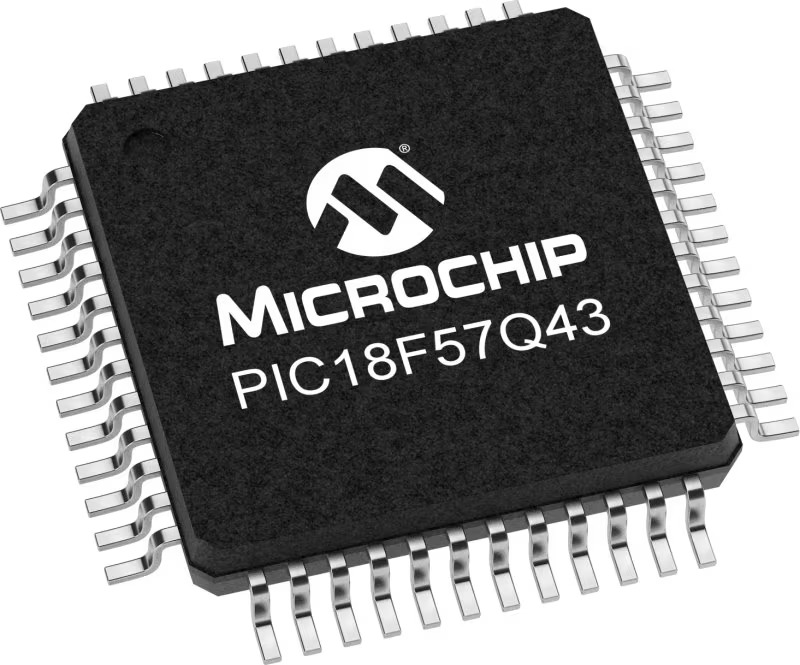
Architecture
PIC
MCU Memory (KB)
128
Silicon Vendor
Microchip
Pin count
48
RAM (Bytes)
8196
You complete me!
Accessories
Curiosity Nano Base for Click boards is a versatile hardware extension platform created to streamline the integration between Curiosity Nano kits and extension boards, tailored explicitly for the mikroBUS™-standardized Click boards and Xplained Pro extension boards. This innovative base board (shield) offers seamless connectivity and expansion possibilities, simplifying experimentation and development. Key features include USB power compatibility from the Curiosity Nano kit, alongside an alternative external power input option for enhanced flexibility. The onboard Li-Ion/LiPo charger and management circuit ensure smooth operation for battery-powered applications, simplifying usage and management. Moreover, the base incorporates a fixed 3.3V PSU dedicated to target and mikroBUS™ power rails, alongside a fixed 5.0V boost converter catering to 5V power rails of mikroBUS™ sockets, providing stable power delivery for various connected devices.
Used MCU Pins
mikroBUS™ mapper
Take a closer look
Click board™ Schematic

Step by step
Project assembly
Software Support
Library Description
This library contains API for Load Cell 6 Click driver.
Key functions:
loadcell6_get_weight- Load Cell 6 get weight functionloadcell6_calibration- Load Cell 6 calibration functionloadcell6_tare- Load Cell 6 tare the scales function.
Open Source
Code example
The complete application code and a ready-to-use project are available through the NECTO Studio Package Manager for direct installation in the NECTO Studio. The application code can also be found on the MIKROE GitHub account.
/*!
* @file main.c
* @brief LoadCell6 Click example
*
* # Description
* This library contains API for the Load Cell 6 Click driver.
* The library initializes and defines the SPI bus drivers to read status and ADC data.
* The library also includes a function for tare, calibration and weight measurement.
*
* The demo application is composed of two sections :
*
* ## Application Init
* Initialization of SPI module and log UART.
* After driver initialization, app performs the power on
* sets tare the scale, calibrate scale and start measurements.
*
* ## Application Task
* This is an example that demonstrates the use of the Load Cell 6 Click board™.
* The Load Cell 6 Click board™ can be used to measure weight and
* shows the measurement of scales in grams [ g ].
* Results are being sent to the Usart Terminal where you can track their changes.
*
* @author Nenad Filipovic
*
*/
#include "board.h"
#include "log.h"
#include "loadcell6.h"
static loadcell6_t loadcell6;
static log_t logger;
static loadcell6_data_t cell_data;
void application_init ( void )
{
log_cfg_t log_cfg; /**< Logger config object. */
loadcell6_cfg_t loadcell6_cfg; /**< Click config object. */
/**
* Logger initialization.
* Default baud rate: 115200
* Default log level: LOG_LEVEL_DEBUG
* @note If USB_UART_RX and USB_UART_TX
* are defined as HAL_PIN_NC, you will
* need to define them manually for log to work.
* See @b LOG_MAP_USB_UART macro definition for detailed explanation.
*/
LOG_MAP_USB_UART( log_cfg );
log_init( &logger, &log_cfg );
log_info( &logger, " Application Init " );
// Click initialization.
loadcell6_cfg_setup( &loadcell6_cfg );
LOADCELL6_MAP_MIKROBUS( loadcell6_cfg, MIKROBUS_1 );
if ( SPI_MASTER_ERROR == loadcell6_init( &loadcell6, &loadcell6_cfg ) )
{
log_error( &logger, " Communication init." );
for ( ; ; );
}
if ( LOADCELL6_ERROR == loadcell6_default_cfg( &loadcell6 ) )
{
log_error( &logger, " Default configuration." );
for ( ; ; );
}
Delay_ms ( 1000 );
log_printf( &logger, "-------------------------\r\n");
log_printf( &logger, " Tare the scale : \r\n");
log_printf( &logger, "- - - - - - - - - - - - -\r\n");
log_printf( &logger, " >> Remove all object << \r\n");
log_printf( &logger, "- - - - - - - - - - - - -\r\n");
log_printf( &logger, " In the following 10 sec \r\n");
log_printf( &logger, " please remove all object\r\n");
log_printf( &logger, " from the scale. \r\n");
// 10 seconds delay
Delay_ms ( 1000 );
Delay_ms ( 1000 );
Delay_ms ( 1000 );
Delay_ms ( 1000 );
Delay_ms ( 1000 );
Delay_ms ( 1000 );
Delay_ms ( 1000 );
Delay_ms ( 1000 );
Delay_ms ( 1000 );
Delay_ms ( 1000 );
log_printf( &logger, "-------------------------\r\n");
log_printf( &logger, " Start tare scales \r\n");
loadcell6_tare( &loadcell6, &cell_data );
Delay_ms ( 500 );
log_printf( &logger, "-------------------------\r\n");
log_printf( &logger, " Tarring is complete \r\n");
log_printf( &logger, "-------------------------\r\n");
log_printf( &logger, " Calibrate Scale : \r\n");
log_printf( &logger, "- - - - - - - - - - - - -\r\n");
log_printf( &logger, " >>> Load etalon <<< \r\n");
log_printf( &logger, "- - - - - - - - - - - - -\r\n");
log_printf( &logger, " In the following 10 sec \r\n");
log_printf( &logger, "place 200g weight etalon\r\n");
log_printf( &logger, " on the scale for \r\n");
log_printf( &logger, " calibration purpose. \r\n");
// 10 seconds delay
Delay_ms ( 1000 );
Delay_ms ( 1000 );
Delay_ms ( 1000 );
Delay_ms ( 1000 );
Delay_ms ( 1000 );
Delay_ms ( 1000 );
Delay_ms ( 1000 );
Delay_ms ( 1000 );
Delay_ms ( 1000 );
Delay_ms ( 1000 );
log_printf( &logger, "-------------------------\r\n");
log_printf( &logger, " Start calibration \r\n");
if ( LOADCELL6_OK == loadcell6_calibration( &loadcell6, LOADCELL6_WEIGHT_200G, &cell_data ) )
{
log_printf( &logger, "-------------------------\r\n");
log_printf( &logger, " Calibration Done \r\n");
log_printf( &logger, "- - - - - - - - - - - - -\r\n");
log_printf( &logger, " >>> Remove etalon <<< \r\n");
log_printf( &logger, "- - - - - - - - - - - - -\r\n");
log_printf( &logger, " In the following 5 sec \r\n");
log_printf( &logger, " remove 200g weight \r\n");
log_printf( &logger, " etalon on the scale. \r\n");
Delay_ms ( 1000 );
Delay_ms ( 1000 );
Delay_ms ( 1000 );
Delay_ms ( 1000 );
Delay_ms ( 1000 );
}
else
{
log_printf( &logger, "-------------------------\r\n");
log_printf( &logger, " Calibration Error \r\n");
for ( ; ; );
}
log_printf( &logger, "-------------------------\r\n");
log_printf( &logger, " Start measurements : \r\n");
log_printf( &logger, "-------------------------\r\n");
}
void application_task ( void )
{
static float weight_g;
if ( LOADCELL6_OK == loadcell6_get_weight( &loadcell6, &cell_data, &weight_g ) )
{
log_printf(&logger, " Weight : %.2f g\r\n", weight_g );
}
}
int main ( void )
{
/* Do not remove this line or clock might not be set correctly. */
#ifdef PREINIT_SUPPORTED
preinit();
#endif
application_init( );
for ( ; ; )
{
application_task( );
}
return 0;
}
// ------------------------------------------------------------------------ END
Additional Support
Resources
Category:Force






















